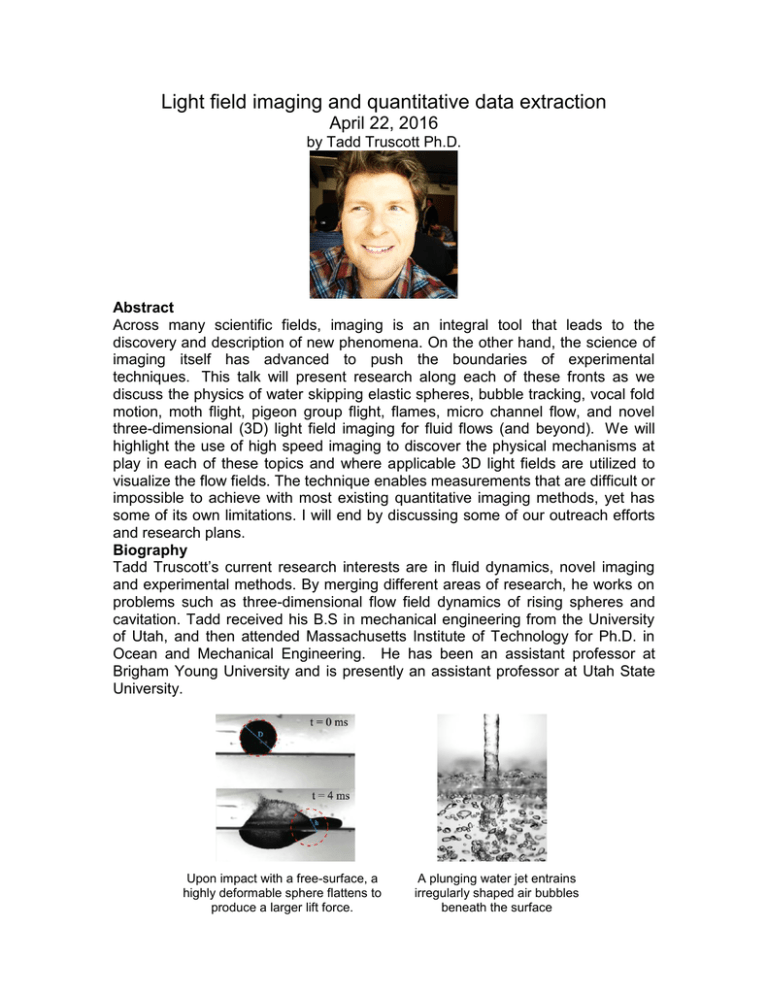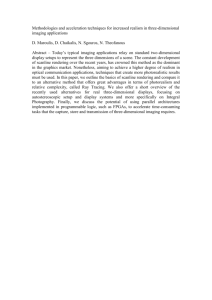Light field imaging and quantitative data extraction April 2 , 2016 2
advertisement

Light field imaging and quantitative data extraction April 22, 2016 by Tadd Truscott Ph.D. Abstract Across many scientific fields, imaging is an integral tool that leads to the discovery and description of new phenomena. On the other hand, the science of imaging itself has advanced to push the boundaries of experimental techniques. This talk will present research along each of these fronts as we discuss the physics of water skipping elastic spheres, bubble tracking, vocal fold motion, moth flight, pigeon group flight, flames, micro channel flow, and novel three-dimensional (3D) light field imaging for fluid flows (and beyond). We will highlight the use of high speed imaging to discover the physical mechanisms at play in each of these topics and where applicable 3D light fields are utilized to visualize the flow fields. The technique enables measurements that are difficult or impossible to achieve with most existing quantitative imaging methods, yet has some of its own limitations. I will end by discussing some of our outreach efforts and research plans. Biography Tadd Truscott’s current research interests are in fluid dynamics, novel imaging and experimental methods. By merging different areas of research, he works on problems such as three-dimensional flow field dynamics of rising spheres and cavitation. Tadd received his B.S in mechanical engineering from the University of Utah, and then attended Massachusetts Institute of Technology for Ph.D. in Ocean and Mechanical Engineering. He has been an assistant professor at Brigham Young University and is presently an assistant professor at Utah State University. Upon impact with a free-surface, a highly deformable sphere flattens to produce a larger lift force. A plunging water jet entrains irregularly shaped air bubbles beneath the surface








